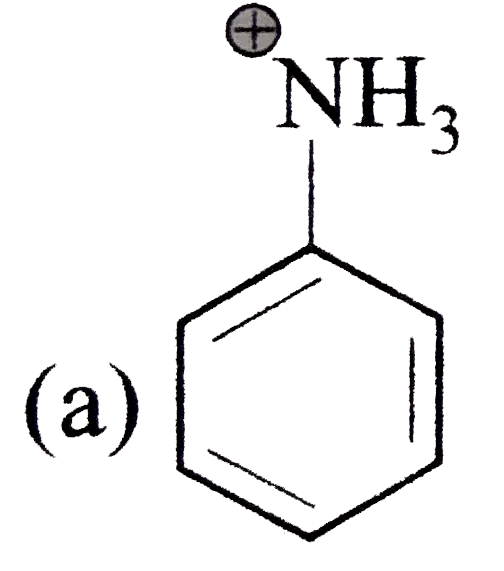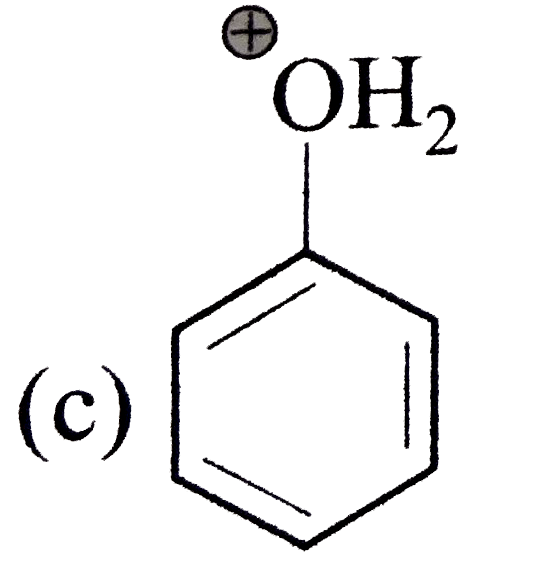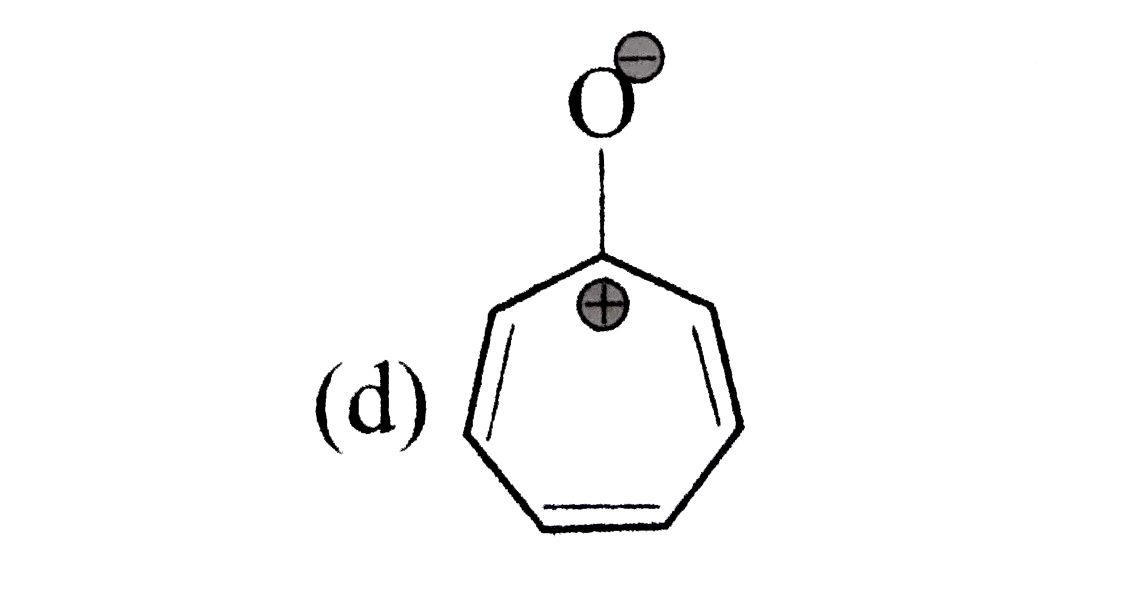In which delocalisation of positive charge is possible?




The correct Answer is:D
To determine in which scenario the delocalization of positive charge is possible, we will analyze each option step by step.
Step 1: Analyze Option A
- Structure: A nitrogen (N) atom with three hydrogen (H) atoms and a positive charge.
- Delocalization Attempt: If we try to delocalize the positive charge by turning a bond, we would end up with a structure where nitrogen has 10 electrons.
- Conclusion: This is not possible because nitrogen can only accommodate a maximum of 8 electrons in its valence shell. Therefore, positive charge delocalization is not possible in option A.
Step 2: Analyze Option B
- Structure: A nitrogen atom with two hydrogen atoms and a double bond, along with a positive charge.
- Delocalization Attempt: Trying to delocalize the positive charge by shifting a bond results in nitrogen again having 10 electrons.
- Conclusion: This is also not possible, as nitrogen cannot exceed its octet. Thus, positive charge delocalization is not possible in option B.
Step 3: Analyze Option C
- Structure: A positively charged hydroxyl group (OH2+).
- Delocalization Attempt: Attempting to delocalize the positive charge by breaking a bond leads to a situation where the oxygen would have more than 8 electrons.
- Conclusion: This is not feasible since oxygen cannot accommodate more than 8 electrons. Hence, positive charge delocalization is not possible in option C.
Step 4: Analyze Option D
- Structure: A structure with multiple double bonds and a positive charge.
- Delocalization Attempt: If we attempt to delocalize the positive charge by breaking a bond, we can create a double bond while maintaining the octet rule for the involved atoms.
- Conclusion: In this case, the delocalization of positive charge is possible without violating the octet rule. Therefore, option D is the correct answer.
Final Answer
The delocalization of positive charge is possible in Option D.
---
- Structure: A nitrogen (N) atom with three hydrogen (H) atoms and a positive charge.
- Delocalization Attempt: If we try to delocalize the positive charge by turning a bond, we would end up with a structure where nitrogen has 10 electrons.
- Conclusion: This is not possible because nitrogen can only accommodate a maximum of 8 electrons in its valence shell. Therefore, positive charge delocalization is not possible in option A.
- Structure: A nitrogen atom with two hydrogen atoms and a double bond, along with a positive charge.
- Delocalization Attempt: Trying to delocalize the positive charge by shifting a bond results in nitrogen again having 10 electrons.
- Conclusion: This is also not possible, as nitrogen cannot exceed its octet. Thus, positive charge delocalization is not possible in option B.
- Structure: A positively charged hydroxyl group (OH2+).
- Delocalization Attempt: Attempting to delocalize the positive charge by breaking a bond leads to a situation where the oxygen would have more than 8 electrons.
- Conclusion: This is not feasible since oxygen cannot accommodate more than 8 electrons. Hence, positive charge delocalization is not possible in option C.
- Structure: A structure with multiple double bonds and a positive charge.
- Delocalization Attempt: If we attempt to delocalize the positive charge by breaking a bond, we can create a double bond while maintaining the octet rule for the involved atoms.
- Conclusion: In this case, the delocalization of positive charge is possible without violating the octet rule. Therefore, option D is the correct answer.
The delocalization of positive charge is possible in Option D.
Topper's Solved these Questions
- SOME BASIC PRINCIPALS OF ORGANIC CHEMISTRYBOOK - A2ZCHAPTER - SOME BASIC PRINCIPALS OF ORGANIC CHEMISTRYEXERCISE - Acid And Basic Strength
29 Videos
- SOME BASIC PRINCIPALS OF ORGANIC CHEMISTRYBOOK - A2ZCHAPTER - SOME BASIC PRINCIPALS OF ORGANIC CHEMISTRYEXERCISE - Bond Fission, Reagents, Reactive Intermediates And Their Stability
31 Videos
- SOME BASIC CONCEPTS OF CHEMISTRYBOOK - A2ZCHAPTER - SOME BASIC CONCEPTS OF CHEMISTRYEXERCISE - Section D - Chapter End Test
30 Videos
- STATES OF MATTERBOOK - A2ZCHAPTER - STATES OF MATTEREXERCISE - Section D - Chapter End Test
30 Videos
Similar Questions
Knowledge Check
In which of the following carbocations, delocalisation of positive charge is possible :
A B
B C
C D⊕CH2−O−CH3
D⊕CH2−O−CH3In which cases delocalisation of charge is possible ?
A BΘO−P(CH3)2CΘO−⊕P(CH3)2DΘO−B(CH3)2
BΘO−P(CH3)2CΘO−⊕P(CH3)2DΘO−B(CH3)2Assertion: Pyrrolidince (II) is more basic than pyrrole (I)

Reason: Protonated pyrrole has delocalisation of positive charge in aromatic ring.AIf both assertion and reason are true and the reason is the correct explanation of the assertion.BIf both assertion and reason are true and the reason is the correct explanations of the assertionCIf assertion is true but reason is false.DIf assertion is false but reason is true.
